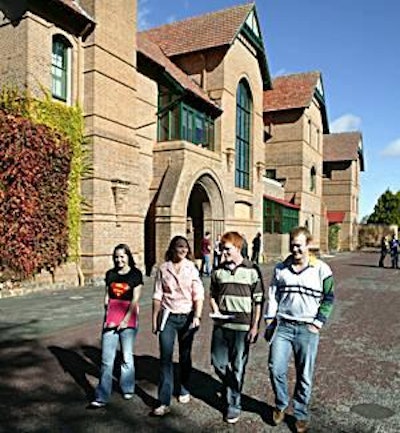
A net energy system that could lead to a smaller environmental footprint and commercial advantage for Australia’s chicken meat producers is the focus of a nationwide collaboration funded by the Armidale-based Poultry Cooperative Research Centre (Poultry CRC).
The net energy system essentially advocates a new way of approaching poultry diets and feed formulation, allowing nutritionists to account for losses of chemical energy in the solid, liquid and gaseous excreta, or as heat. A net energy database will help nutritionists formulate diets for animals, overcoming the inherent reliance on digestible energy, or apparent metabolisable energy (AME) value.
In Australia, feed conversion ration (FCR) is, perhaps, the most important driver for the poultry industry This is because the industry there competes with the food industry for grains as, in many parts of the world, there is no dedicated feed grain sector. Purely from the nutrition point of view, within an acceptable range of feed intakes, feed efficiency is maximized when the ratios between energy and nutrients, such as amino acids, are appropriate. When dietary energy values are not additive, ie affected by the presence of anti-nutrients, these ratios vary accordingly. The current default system for determining dietary energy values is the AME bioassay.
Overcoming problems
“In practical feed formulation for poultry, AME values obtained for individual ingredients are assumed to be additive, but in reality they are not, explained Poultry CRC CEO and nutritionist Professor Mingan Choct.
“This is because anti-nutrients from one ingredient will affect the available energy of another in the complex ecosystem of the gut. The net energy system overcomes this problem to a large extent, as it gives dietary energy values that ultimately remain available to the animal for maintenance, growth and reproduction. A net energy system for pigs has already been used quite successfully.”
The net energy system has the potential to overcome this problem, but its implementation has been hampered by the highly tedious and very expensive way net energy is determined using calorimetry. Today, as food security has become one of the most important issues in the world, it is also clear that food must be produced efficiently, with as small an environmental footprint as possible, argues Professor Choct. Furthermore, ethical issues surrounding food production are attracting more attention and, consequently, closer attention is required for the integrity and traceability of the product in regards to production systems and animal welfare.
Net energy systems for feed formulation have been talked about over the last five decades or more, but there is now a tremendous momentum to revisit the net energy system in order to achieve commercial advantage for the poultry industry in feed formulation. A mere 10 grams of feed saved per kilo of live growth in chickens means over Aus$4 million to the Australian chicken meat industry. If similar savings were achieved globally, it could be as much as Aus$400 million per annum.
The economic, social and environmental benefits of a net energy system are manifold, including improved FCR due to a more predictable ratio between dietary energy and key nutrients, the CRC believes.
However, there have been studies questioning whether a net energy system will yield any positive results for the industry as well as numerous challenges requiring meticulous basic work in order to establish a meaningful net energy system that has sufficient accuracy and takes into account all the possible variables in determining the net energy value of feed.
Values differ widely between feed ingredients for poultry, such as maize and barley, even though nutritionists are formulating the diet to identical AME values. More importantly, there is a significant difference in the nutritive value between varieties of the same ingredient, such as wheat, which is difficult to consider when formulating poultry diets without a rapid feed test system.
Stronger position
“Despite environmental conditions for chicken meat production being well-controlled, the challenge ahead is tremendous as it will be nearly impossible to measure the net energy value of all feed ingredients in different classes of chickens,” said Professor Choct.
“However, through the Poultry CRC, an Australia-wide collaborative effort is underway to set up a state of the art net energy testing facility. This, together with collaboration from experts around the world, will see a multi-pronged approach, including modeling and actual net energy measurements to establish a net energy database during the next three years.
“No one can predict how it will go, but if we do not try it, we will never know,” Professor Choct added.
“Poultry’s contribution to food security is indispensable, and any increase in feed efficiency means reduced use of resources per kilo of poultry product, which translates into less use of water and lower output of greenhouse gasses,” said Professor Choct.


















